In a high competitive industrial context, the experimental tests, even at reduced scale, are costly and time consuming for a project : breadboards realization, tests equipment availability, tests duration and results analysis. Willing to provide efficient innovating solutions within a cost reduction approach, LEMMA has developed the numerical basin concept with its combined expertise in numerical simulation and hydrodynamics.
LEMMA has developed new numerical methods, faster and more accurate, implemented with parallel algorithms in the CFD software NICEFLOW®, which simulates the real turbulent flow of vessels behavior or oil platforms (floating structures).
The numerical performances of the numerical basin enable to seize the reality of physical phenomenon at scale 1. We now are able to:
- Generate any type of wave : monochromatic, bi-chromatic, regular wave, regular wave packet, irregular waves, within any number of oscillating flaps or spectral methods. Linear or non linear approach considered to generate waves is coupled to LES-VMS models and allows us to perform very accurate simulations, up to order 6 in space (see example below untitled Numerical investigation of thermally stratified wake).
- Take into account current and wind without velocity limitation.
- Modeling anchors (linear and non linear) linked to floating bodies.
- Study sea-keeping and maneuverability.
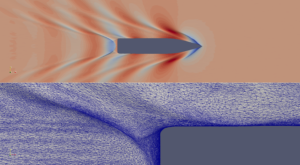
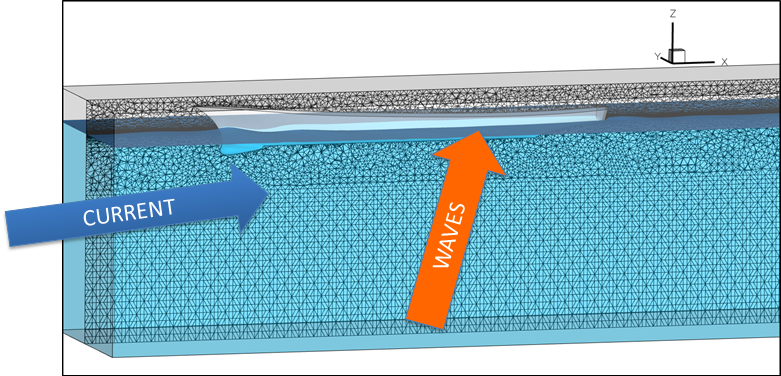
To see further details on this subject, please follow this link.
- NACA profile in water
Several experimental studies have been completed in the IIHR—Hydroscience & Engineering towing tank. We reproduced NACA experiments to perform validation studies. Below are briefly presented the results.
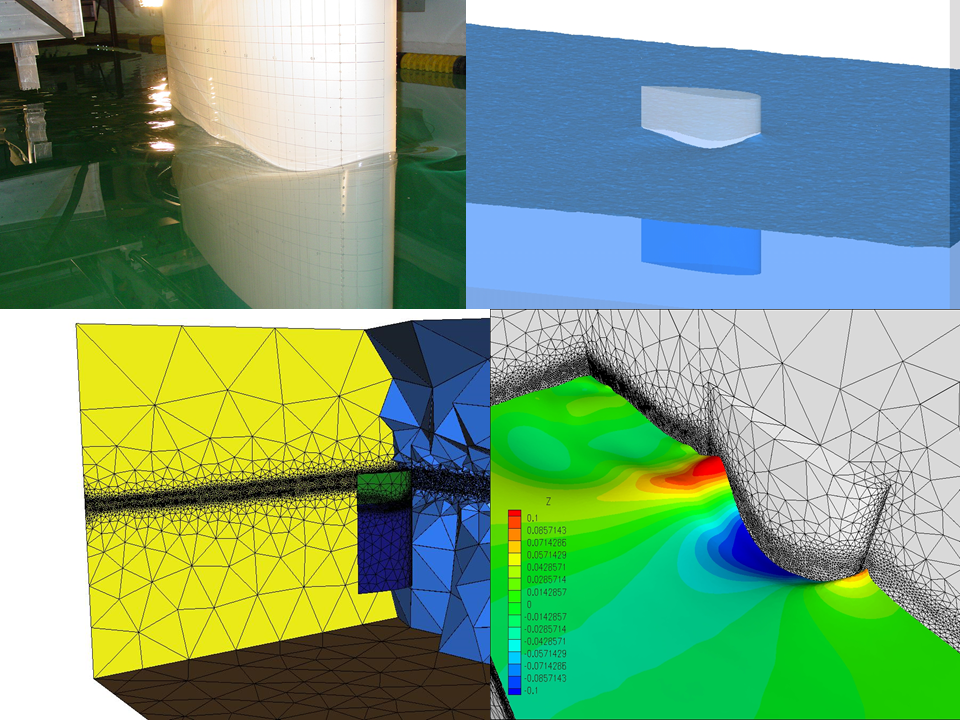
- Edge impacting free surface
Initially, the wedge is falling under the gravity and, after the impact, its motion results from its interaction with the water. For this simulation, the geometric mesh adaptation strategy has been applied. A sequence of three quasi embedded meshes containing respectively 3 069, 10 432 and 37 146 vertices has been generated. They correspond to a division by two of spatial step size. This sequence will enable us to study the convergence of the method. During the simulation, when the mesh becomes too distorted due to the displacement of the wedge, the adapted mesh is regenerated with the same geometric and size criteria. CPU time = 6 hours on 1 processor. For further details, see the publication [Allain & al., OMAE 2009]
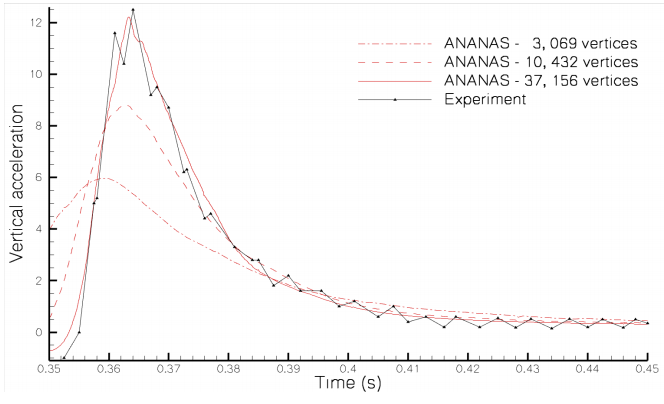
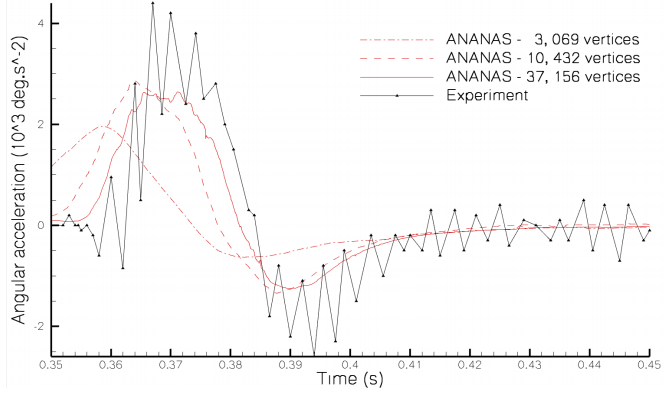
For further details about this study, please click here.
